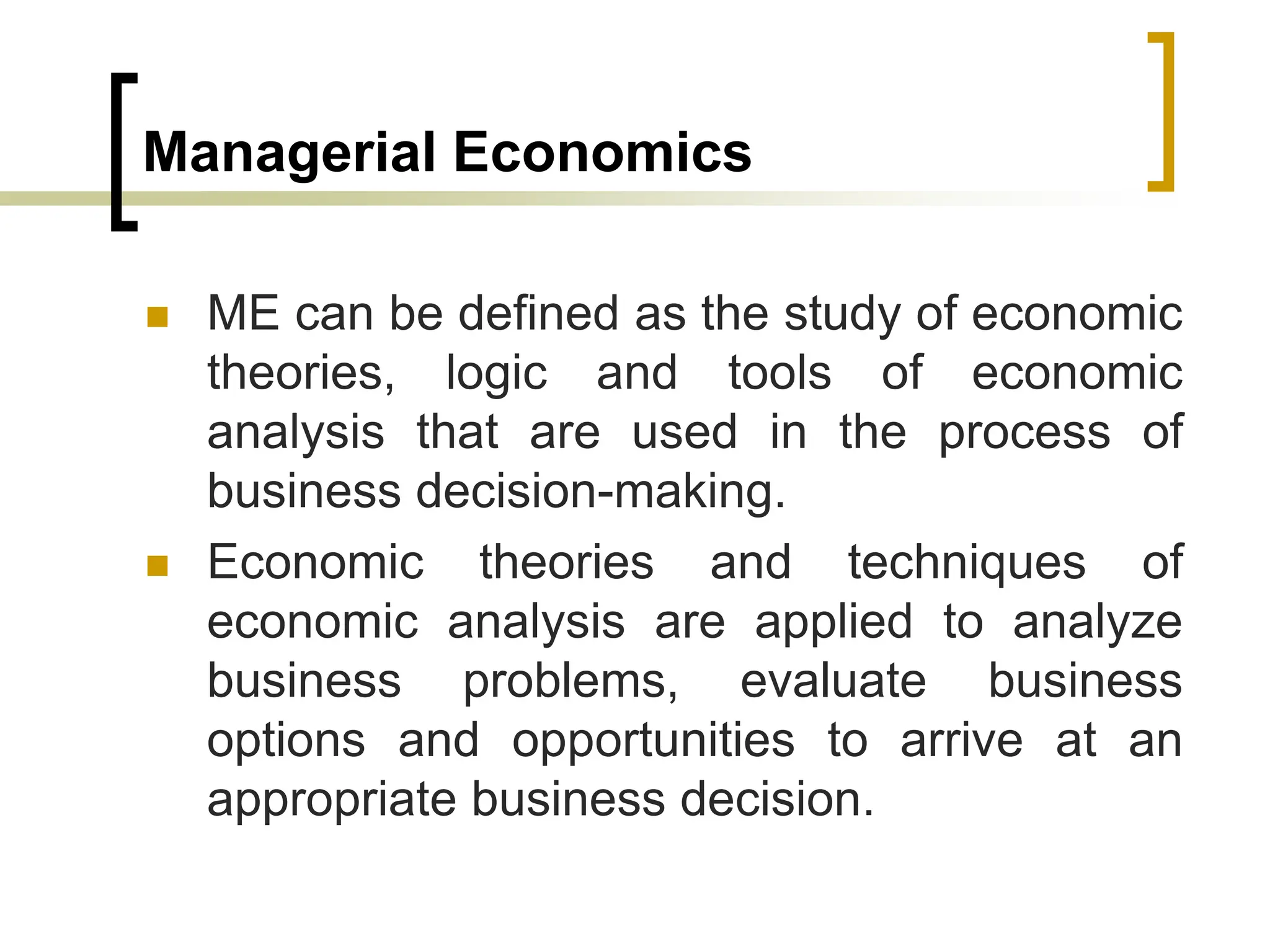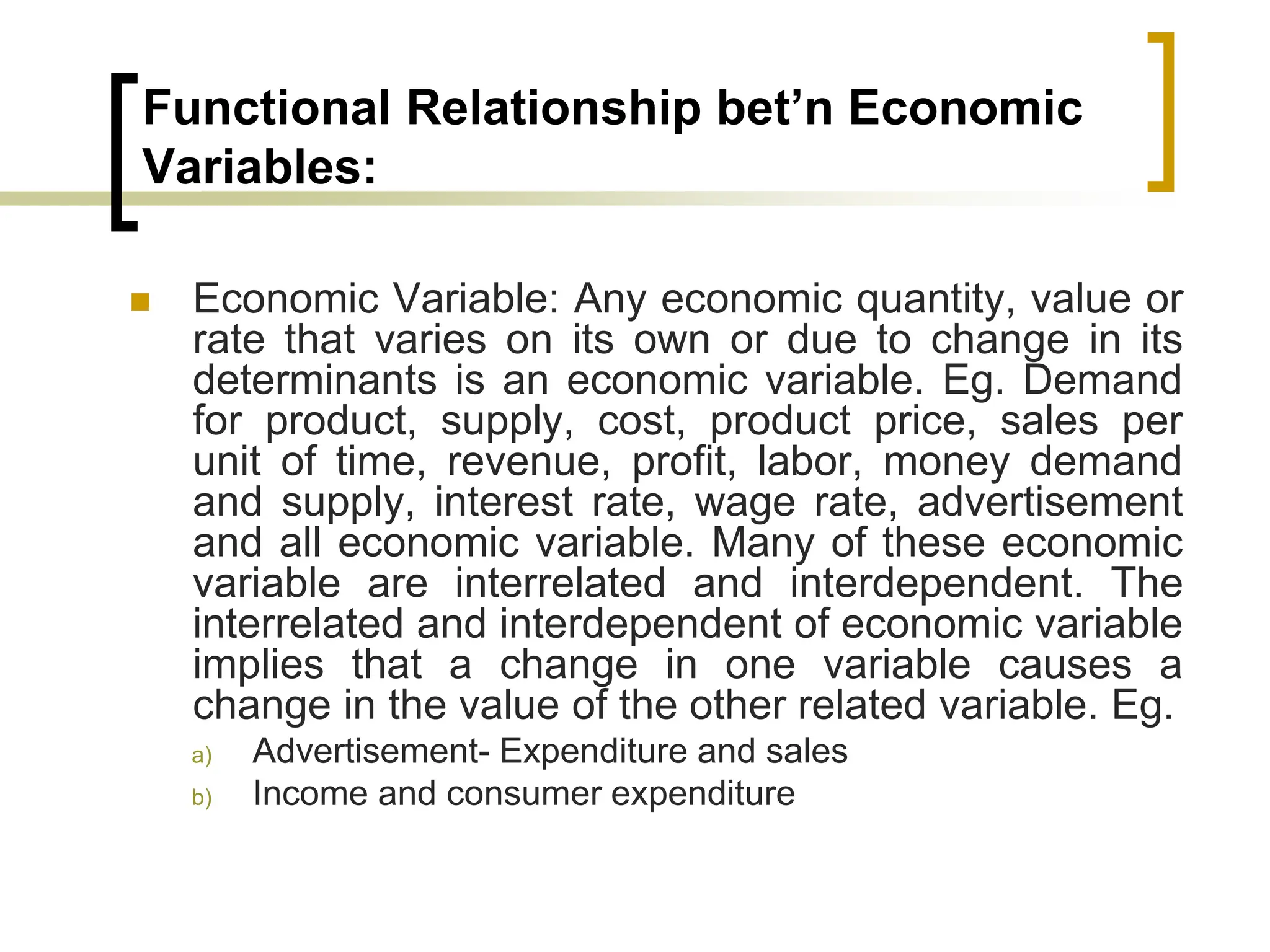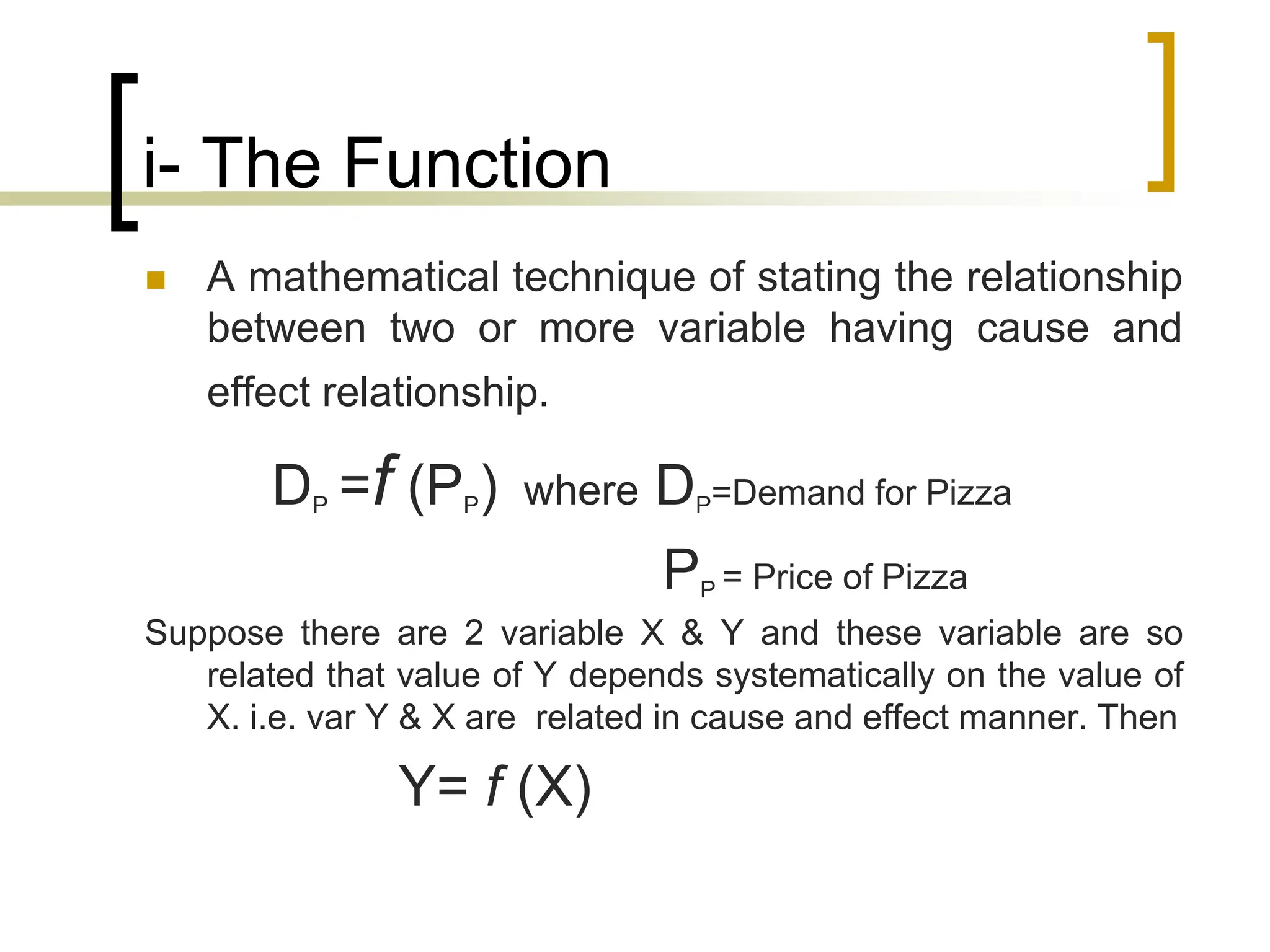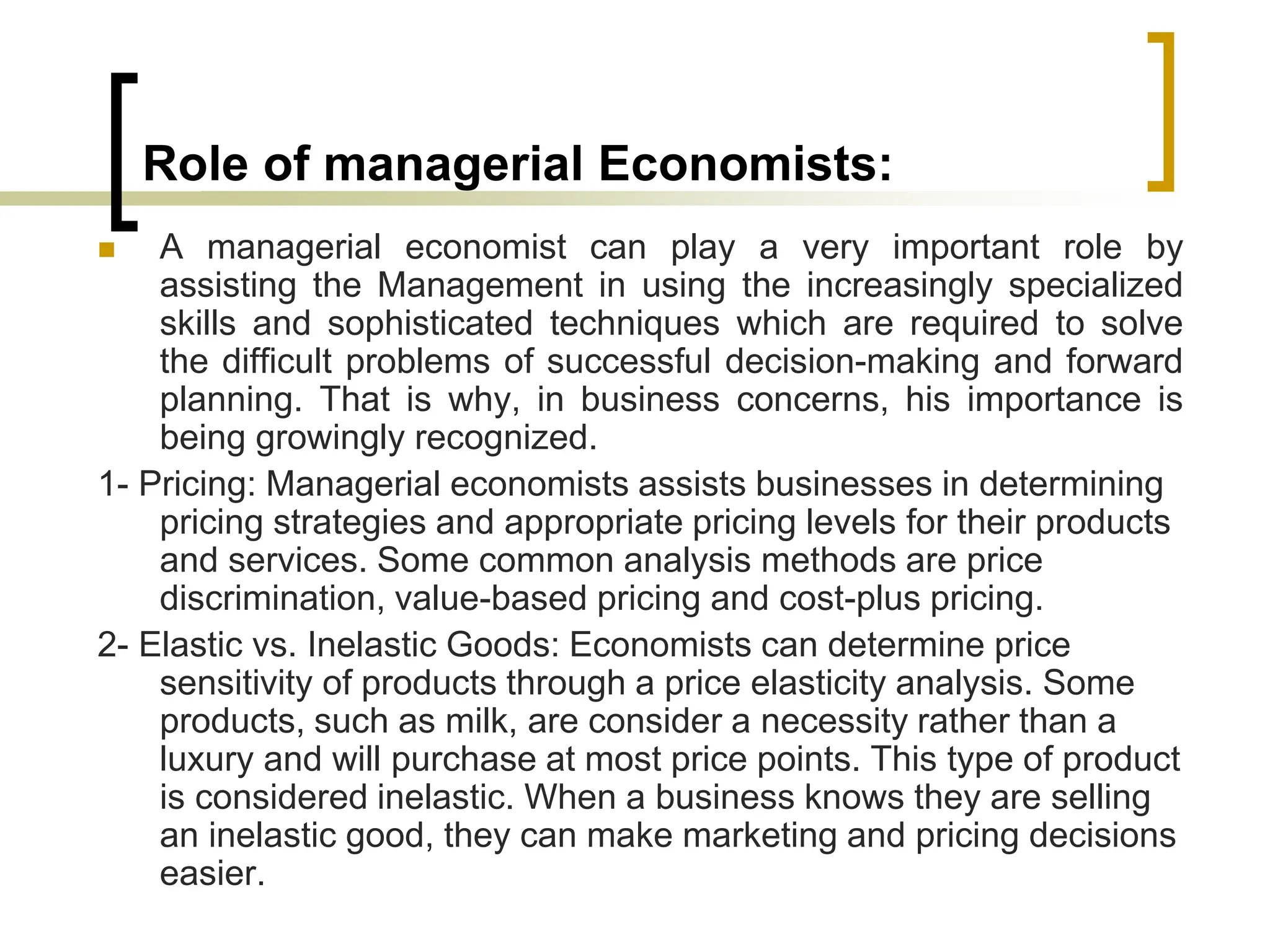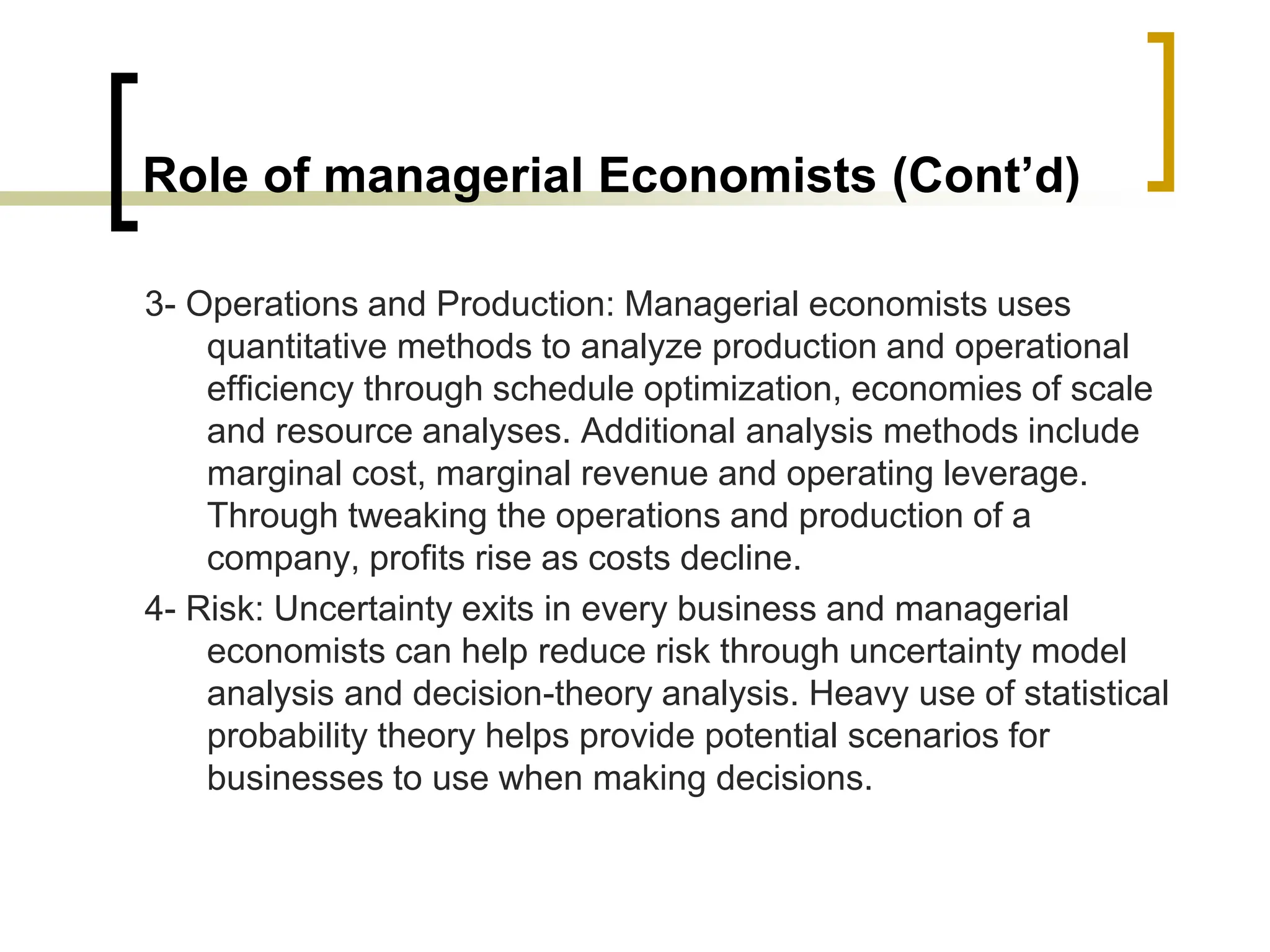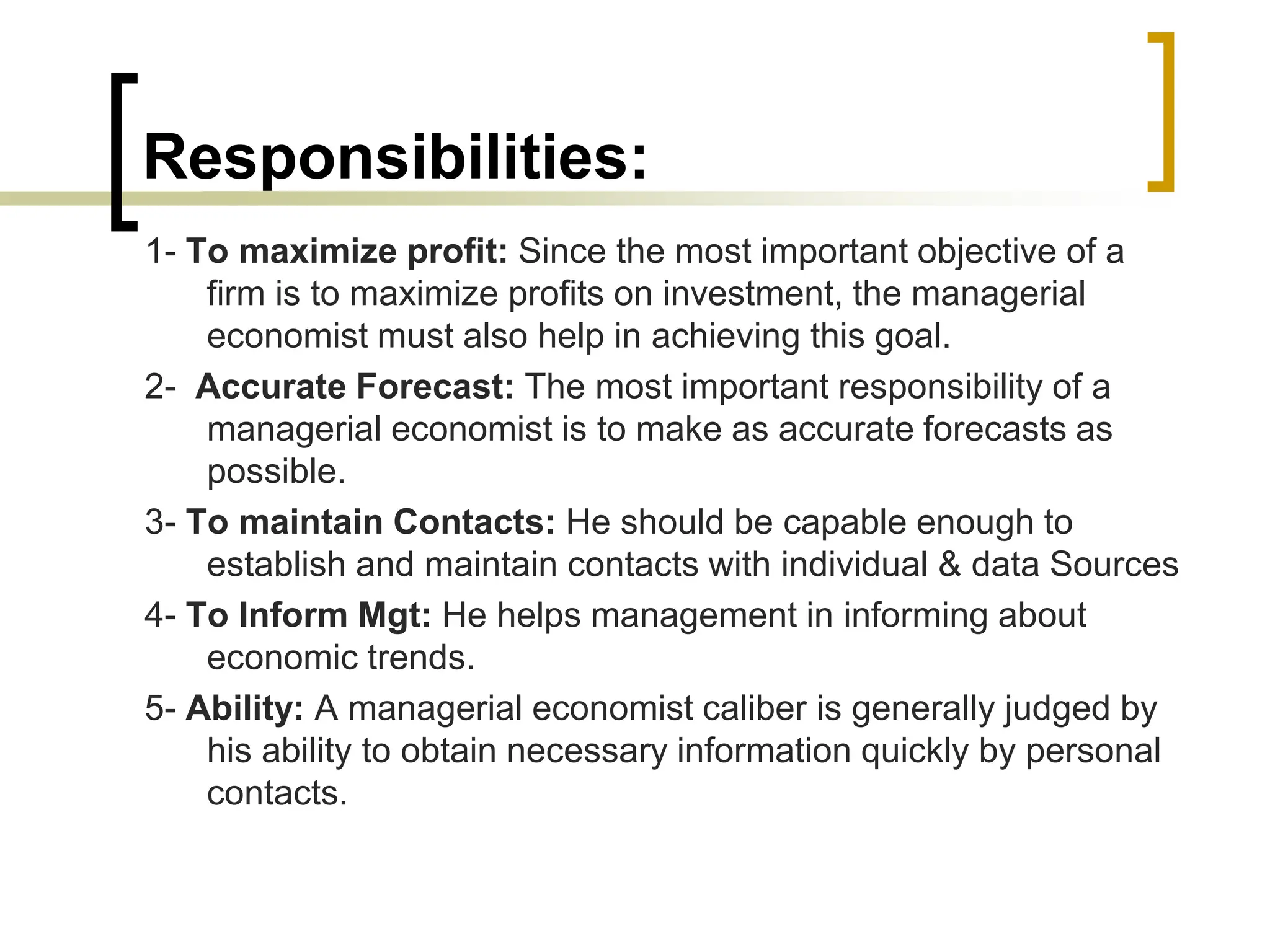The document outlines the syllabus for Managerial Economics, covering its nature, scope, and basic economic tools necessary for business decision-making. It emphasizes the significance of economic principles, such as opportunity cost and demand forecasting, in evaluating business options and optimizing outcomes. Additionally, it discusses the roles and responsibilities of managerial economists in assisting management with pricing strategies, operational efficiency, and risk assessment.




